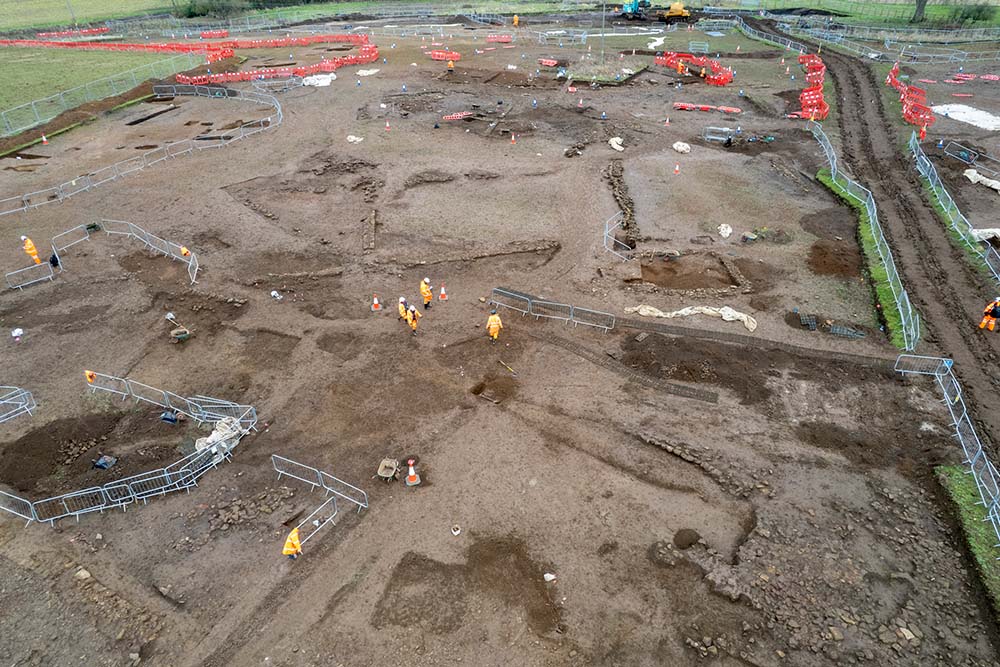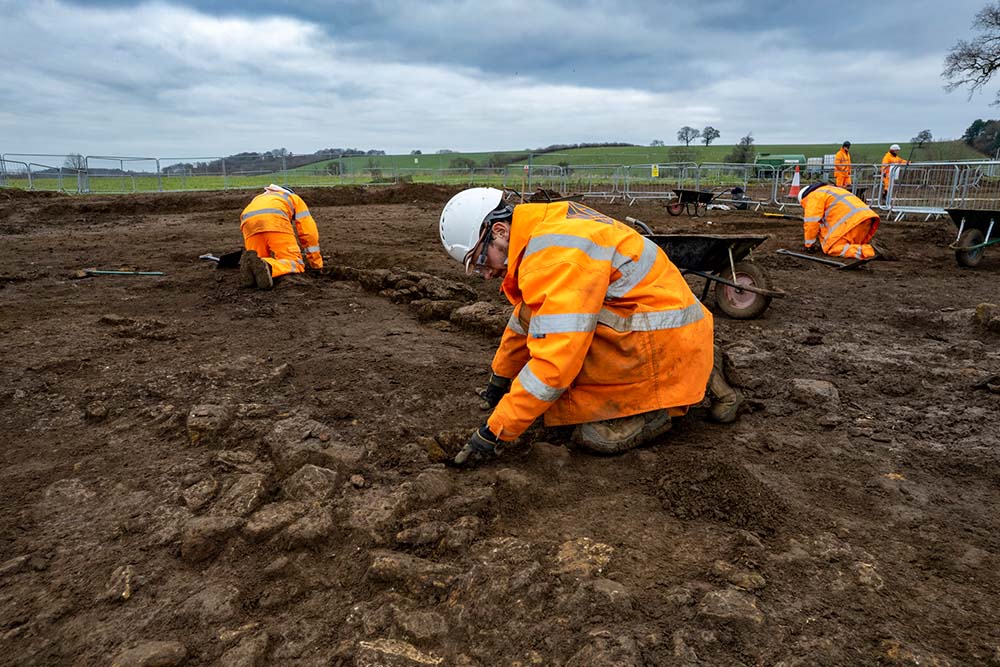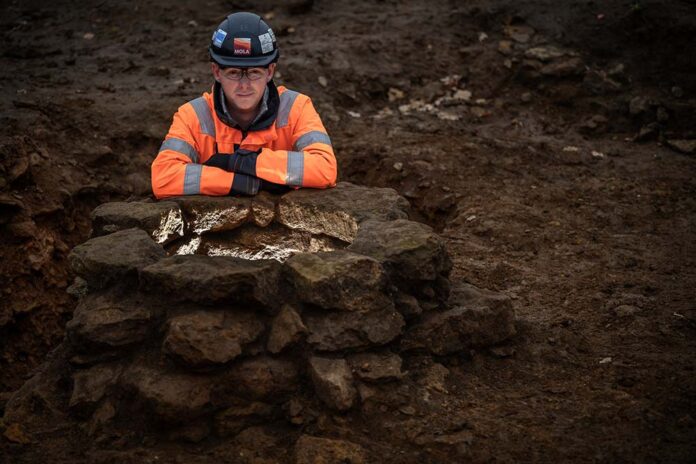Archaeologists working on HS2 have made a stunning find – one of the most significant on the project to date.
For the last year, about 80 archaeologists have been working to uncover an Iron Age village, which went on to become a wealthy Roman trading town, in South Northamptonshire.
The team, from MOLA Headland Infrastructure, were following up on information dating back to the 18th century, as well as survey and analysis from the HS2 project itself.
The original use of the site, known as Blackgrounds after the black soil found there, began in the Iron Age when it was a village formed of over 30 roundhouses, which have been uncovered alongside an Iron Age road. Evidence from the dig shows that the settlement expanded over time, becoming more prosperous during the Roman period, with new stone buildings and new roads.

Considering the close proximity of the Iron Age remains, the archaeologists believe it is likely people continued to live at the site into the Roman period and adapted to a new way of life. This ‘Romanisation’ included taking on Roman customs, products and building techniques.
Running through the site is a 10m wide Roman road of exceptional size. It indicates that the settlement would have been very busy, with carts simultaneously coming and going to load and unload goods. The wealth of the settlement is likely to have been based on trade from the nearby River Cherwell and via the Roman road. Over 300 Roman coins, discovered as if lost or discarded, have been recovered, an indication that a significant volume of commerce was passing through this area.
The layout of the site suggests the settlement was split into different areas, with foundations uncovered of buildings used for domestic purposes, as well as more industrial practices. At its peak during the Roman age, Blackgrounds would have been a bustling and busy area, shown through the evidence of workshops, kilns, and several beautifully preserved wells, uncovered by HS2 archaeologists. In one area of the site, the earth has been preserved with a fiery red colour, indicating that the area would have been used for activities involving burning, such as bread making, foundries for metalwork, or a pottery kiln.
James West, MOLA Site Manager said: “This is certainly one of the most impressive sites MOLA Headland Infrastructure has discovered whilst working on the HS2 scheme. A particular highlight for me has been understanding the emerging story of Blackgrounds, which we now know spans multiple time periods. Uncovering such a well-preserved and large Roman road, as well as so many high-quality finds has been extraordinary and tells us so much about the people who lived here. The site really does have the potential to transform our understanding of the Roman landscape in the region and beyond.”

Alongside coinage, the wealth of the settlement’s inhabitants can be seen in the finds uncovered during the dig, which include glass vessels, highly decorative pottery, jewellery and evidence of make-up. Traces of the mineral galena, lead sulphide, was found on the site – a substance that was crushed and mixed with oil to make cosmetics.
A particularly interesting discovery in the dig has been half a set of shackles, similar to those recently found at an excavation in Rutland. Unlike those uncovered in Rutland, the shackles found at Blackgrounds are not associated with a burial but may suggest the presence of either criminal activity or slave labour.
The removed artefacts are being cleaned and analysed by specialists from MOLA Headland Infrastructure, and the details of the buildings and layout of the settlement are being carefully mapped. Blackgrounds is one of over 100 archaeological sites that HS2 has examined since 2018 between London and Birmingham, which combined provide a detailed insight into the rich history of Britain.
Mike Court, Lead Archaeologist for HS2 Ltd, said: “As we near the end of our archaeological fieldwork between London and Birmingham, we have made some unprecedented discoveries, which we will continue to share with communities near our works. The opportunity to carefully examine a site such as Blackgrounds, and map out a long history of the site, brought to life through artefacts, building remains and roads, has enabled us to provide a more in-depth understanding of what life was like in rural South Northamptonshire in the Iron and Roman Age.”
The history of the site, from the Iron Age to the Roman era, features in the new BBC Digging for Britain series, hosted by Professor Alice Roberts. The episode featuring the Blackgrounds dig will air on BBC Two on Tuesday 11th January at 8pm.







































 0113 2082620
0113 2082620 info@railbusinessdaily.com
info@railbusinessdaily.com 15 Mariner Court, Wakefield WF4 3FL
15 Mariner Court, Wakefield WF4 3FL

